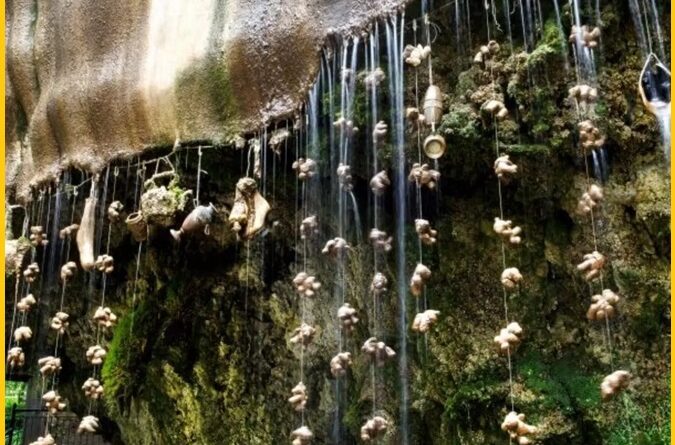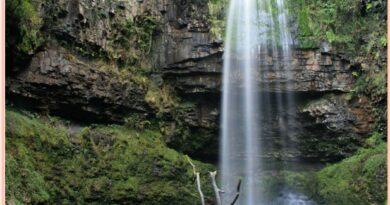The Supernatural Petrifying Well: Where Nature Turns to Stone
Supernatural Petrifying Well England
The Petrifying Well is a fascinating site in England located in Knaresborough, North Yorkshire. It’s known for its unique geological feature where items dipped into the well become covered in a layer of calcite, effectively “petrifying” them over time. The well has been a popular attraction since the 16th century and has a bit of a supernatural reputation due to its unusual process.
The local legend is that the well has mystical powers and that the calcification process can preserve and petrify objects. People often leave mementos or personal items in the well, hoping for good fortune or protection. The surrounding area also has a picturesque setting with the old town and a historical castle nearby, making it a great spot for a visit.
Petrifying well
A petrifying well is a type of well or water body that causes objects to develop a stone-like surface. When an item is submerged in this well and left for months or years, it gradually acquires a stony outer layer. is a type of well or water body that causes objects to develop a stone-like surface. When an item is submerged in this well and left for months or years, it gradually acquires a stony outer layer.
Nature
When an object is placed in a petrifying well and left for weeks or months, it develops a stony exterior. While this was once thought to be due to magic or witchcraft, it is a natural process caused by evaporation and the deposition of minerals in water with a high mineral content. This process should not be confused with petrification, which involves the replacement of the original object’s molecules with those of stone or mineral, rather than just adding a stony layer.
Notable examples of petrifying wells in England include the spring at Mother Shipton’s Cave in Knaresborough and the one in Matlock Bath, Derbyshire. In Ireland, John Rutty documented such wells at Howth Head and other locations.
Also, Read-Why is this ‘Fantastic Jurassic Coast, England’ known as a Mesozoic masterpiece
At this location, you can observe everyday objects gradually turning to stone. Unlike the slow formation of stalactites or stalagmites, objects here petrify relatively quickly—a small teddy bear, for example, takes about 3 to 5 months. You can even purchase a petrified teddy bear from the gift shop to take home with you.

The theory behind the Phenomenon
The water contains calcium, sodium, and magnesium, with traces of lead, zinc, iron, manganese, and aluminum in the form of sulfates and carbonates, along with some chlorides and a trace of silica. When exposed to the open air, calcite is deposited along with the other minerals, most commonly forming tufa and travertine, which can turn anything left in the flow to stone within a few months.
Mother Shipton’s Cave
Mother Shipton’s Cave is a historic attraction located in Knaresborough, North Yorkshire, England. It is best known as the birthplace of the legendary prophetess Ursula Sontheil, better known as Mother Shipton, who was born in the cave in 1488. According to legend, Mother Shipton was a soothsayer and prophetess whose predictions were widely regarded during her lifetime. She is often depicted in folklore as having a witch-like appearance, with a hooked nose and chin.
The cave itself is set in a scenic area along the River Nidd, opposite the ruins of Knaresborough Castle. It is surrounded by lush greenery, steep pathways, and interesting rock formations. One of the unique features of the site is the Petrifying Well, where objects left in the flow of mineral-rich waters are gradually turned to stone due to the high content of calcium, magnesium, and other minerals. The process of petrification has fascinated visitors for centuries, and various objects are suspended in the flow to demonstrate this natural phenomenon.
Visitors to Mother Shipton’s Cave can also explore a small museum, enjoy a walk along a tree-lined path adorned with sculptures, and learn about the history and legends associated with the area. The site includes a wishing well, a café, and a children’s play area, making it a popular destination for families and those interested in folklore and natural wonders.



